#Kushite civilization
Text
The Kingdom of Kush: An Ancient Civilization in the Nile Valley
The Kingdom of Kush, also known as the Kushite Empire, holds a significant place in the annals of ancient history. This powerful kingdom flourished in Nubia, an area along the Nile Valley encompassing present-day northern Sudan and southern Egypt. With a rich and complex history, the Kingdom of Kush emerged as a formidable force, engaging in warfare, trade, and cultural exchange with neighboring…

View On WordPress
#African History#ancient Egypt#Kingdom of Kush#Kushite civilization#Kushite History#Kushites#Nile Valley#north african culture#North African History#Nubian history
1 note
·
View note
Photo
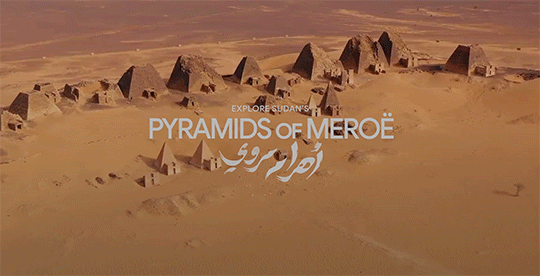
explore sudan’s pyramids of meroë
#gif#MEROË#sudan#PYRAMIDS OF MEROË#nubian pyramids#africa#ancient civilizations#unesco#google#google arts & culture#web experience#interactive experience#art experiments#kushite kingdom#meroe#desert#landscape#culture#pyramids#desktop experience#architecture#elements#check it out it’s really cool
4 notes
·
View notes
Text
Marrakesh was Orlando
Marrakesh was Orlando, the Capital of Morocco, is not an attacked on the duplicate Marrakesh that is in North Africa. This post is intended to educate the masses by shedding light on the lost history of America, and to educate the masses on the domestic presence of the Moors, since the Moors have been labelled as foreign invaders from Morocco that is in North Africa.
If you don’t already know,…

View On WordPress
#advanced ancient civilization#advanced ancient technology#Advanced Technology#ancient Egyptians#Bay Lake Florida#Ethiopia Superior#free energy#Gothic Architecture#Hindu Kush#History of Orlando#India Superior#Kush#Kushites#Marrakesh#Moors#Morocco#Morocco Pavilion#Prester John#Tameri#The bee#the Epcot Center#the Fez House#The Green Swamp#the Marrakesh Restaurant#The Scarab Beetle#The Tangierine Cafe#Walt Disney World
4 notes
·
View notes
Text
Samuel Huntington might have a stroke with this phrasing, the more reason to use it:
One of the first good examples of a 'Clash of Civilizations' was the clash between the Egyptianized Kushite Dynasty and the world state of Assyria, where today's Black History Month writing calls its pause. The world of the Ancient World was a much smaller place with powerful kingdoms in localized areas, that exercised very vast power indeed in much smaller areas and were completely unconcerned with things like 'freedom' and 'human rights' when they had the power to flex it, though the writings of the merchants of old Assyria show equally cynically that where they could not there are prototypes of appeals of the weak against the strong.
Assyria, however, invented the concept not just of the grand king of kings, which predated them as far back as Sarru-Urukhin of Agade (in usual Anglicization Sargon of Akkad), but a true world empire that spanned everywhere its armies could reach. It developed the system of provinces, roads and post offices, mass ethnic cleansing to be a 'final solution' to bothersome thorns in the flesh, and other atrocities that would become the standard points of classical to modern empires.
The great Kushite Dynasty was an apex of the previous era, of the Ancient versus the first stirrings of the Classical. In the event the sheer weight of the Assyrian state and the powers it invented and could call upon were too much and for the first of many times the Pharaohs fell before the power of world states that wanted Egypt as a granary and treated it as such.
There is also something very modern and ironic about a clash of civilizations between the first of the true world empires (and yes it was first, Qin would not unify China for another 500 years or so by the time these guys got started on the Empire business) and a Black state standing for an older order. In this case the Pharaohs lost decisively and the Assyrians confirmed the new order that would find its counterparts in central Asia and in East Asia and in Mesoamerica and the Andes and become a global standard elsewhere.
#lightdancer comments on history#black history month#military history#egyptian history#kushite dynasty#assyrian history#clashes of civilization
0 notes
Text
The Roman Pharaohs of Ancient Egypt
In ancient history the pharaoh was the head of state and ruler of the country. However, he was not just a secular ruler, but a divine being on Earth who acted as an intermediary between the spiritual world and the earthly world. In essence he was a mortal representative of the gods. Interestingly, one did not have to be an Egyptian to be an Egyptian pharaoh. The act of conquering and ruling Egypt qualified one to be a pharaoh. As a result there were many foreign pharaohs throughout Egyptian history including those who were Persian, Nubian, Libyan, Hyksos, Kushite, and Macedonian Greek.
In 30 BC Cleopatra VII became the last ruler of Egypt from the Macedonian Greek Ptolemaic Dynasty. Cleopatra had backed the losing side of a Roman civil war, opposing Octavian and supporting Marc Antony. Octavian won, she was deposed, she committed suicide, and Egypt became a Roman province. When Octavian became Augustus and founded the Roman Empire, the Egyptians also recognized him as the official Pharaoh of Egypt. Afterwards successive Roman emperors were also declared pharaohs, until around the 4th century when Christianity became the dominant religion in Egypt.
Truth be told, most if not all Roman emperors didn't give a damn about being pharaohs. Most emperors never even stepped foot in Egypt and it didn't seem like they took their role as pharaoh very seriously. Regardless Egyptian iconography and art was crafted depicting Roman emperors in Egyptian style wearing Egyptian royal regalia and interacting with Egyptian gods. Some interesting examples are...
Gigachad Pharaoh Augustus

Tiberius

Nero
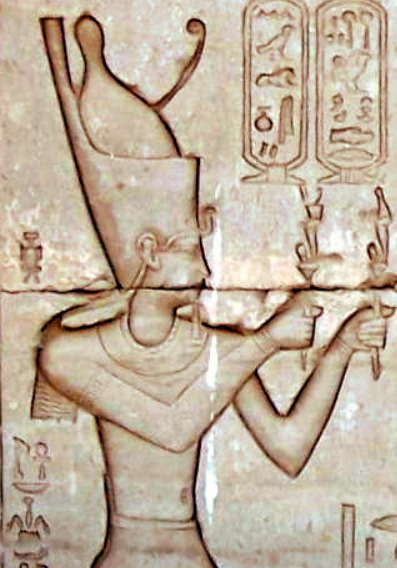
Nero again

Trajan making sacrifices to Hathor
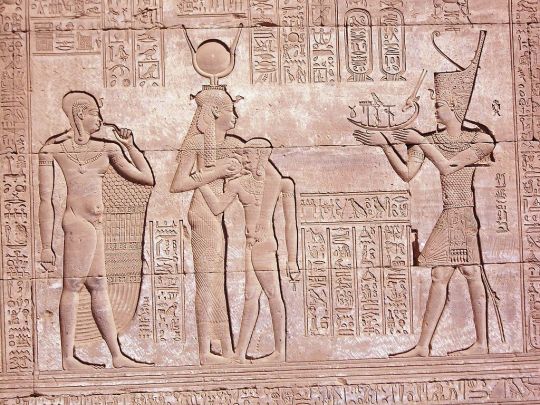
Domitian

Domitian with Horus
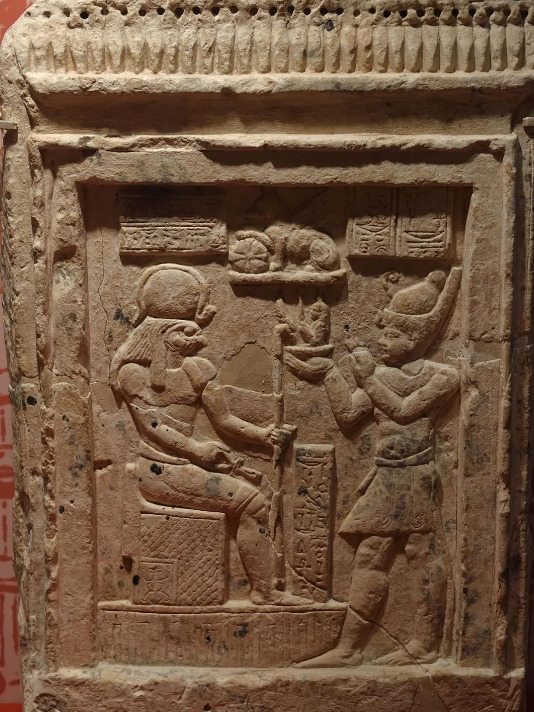
Caracalla
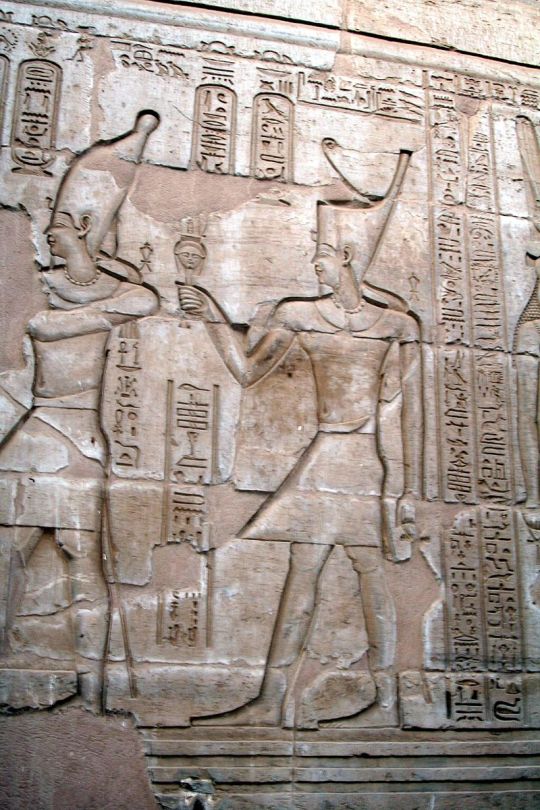
Marcus Aurelius

102 notes
·
View notes
Photo

Over eight thousand years ago in northeastern Africa, this Neolithic Egyptian couple is gazing upon the fertile floodplains of the Nile River Valley from the high plains beyond. Back in those days, the Sahara of North Africa would have been a grassy savanna teeming with wildlife and nomadic peoples instead of the barren desert we know today. Once the land began to dry up between 4000 and 3000 BC, some of the people who had roamed it would have fled to the Nile and begun cultivating its banks, leading to the Egyptian and Kushite civilizations of historic times.
#prehistoric#neolithic#predynastic#ancient egypt#egyptian#kemet#african#black people#people of color#poc#digital art#art
116 notes
·
View notes
Quote
The crux of the Semitist case for the superiority of Semitic civilization is found in the connection between the modern Ethiopian state and the Ancient Aksumite Empire.[32] This connection is evidenced by the national myth of the Queen of Sheba. Bahru Zewde writes, “The story of the Queen of Sheba, which no self-respecting historian could take seriously, was a cardinal element of that legitimacy. Ethiopian history could only be the story of the Semitic north, with the peoples of the south as objects rather than subjects of history.”[33] (emphasis mine) Thus, the Kushitic Oromo have been objects of history in both the North and South because they did not have a legitimate source of authority. Paradoxically, although the Northern Oromo dominated the political scene in the eighteenth and early nineteenth centuries, the lack of studies on these people displays the focus on not solely the Ethiopian state, but specifically on the State’s “legitimate” rulers.[34] Teshale Tibebu argues that the Semitist view, which holds that “Ethiopians are Semitic, not Negroid; civilized, not barbaric; beautiful, not ugly; and so on all are images of Orientalist Semiticism in the Western paradigm of knowledge.”[35] Generally, this view has been perpetuated implicitly by the Habäsha focus of many Ethiopianist studies and the presentation of the Oromo during the Zämänä Mäsafent.[36] This Semiticism is also buttressed by anthropologists who argue for the ethnic and racial boundary between the Oromo and Amhara.[37] Two tropes emerge in this literature: (1) that the boundary between the Amhara and the Oromo is impenetrable; and (2) that individuals who are able to cross it end up in identity limbo as Knuttson puts it regarding some Oromo individuals, as “Oromo who act like Amhara,” or the reverse, as when Markakis sums up Tigrinyan views of Shäwan Amhara as “Oromo who speak Amharic.”[38] Their legacy still continues to influence many Oromo scholars who ascribe to the Oromo people not only a homogeneous culture, but also a country, Oromia.[39]
Brian J. Yates - The Other Abyssinians: The Northern Oromo and the Creation of Modern Ethiopia, 1855–1913 (2020: 6-7)
6 notes
·
View notes
Text
NORTH & EAST AFRICAN RESOURCES
The Anthropological Masterlist is HERE.
North Africa is an African region that spans the northern part of the continent. North Africa shares many cultural and linguistic similarities with the Middle East.
BERBER ─ “The Berber, or Amazigh, people are an African people. They are native to North Africa.”
─ Berber Encyclopedia (in French)
─ Amazigh Culture (in French)
─ Berber Dictionary (in French)
GUANCHE ─ “The Guanche people are an African people. They are native to the Canary Islands.”
─ Guanche Information
─ Guanche History
KUSHITE ─ “The Kingdom of Kush was a Northeast African civilization that lived from 1070 B.C.E. to 550 C.E. They lived in modern-day northern Sudan and southern Egypt.”
─ Kushite Information
─ Kerma History
─ Meroitic Language
KABYLE ─ “The Kabyle people are an African people. They are native to northern Algeria.”
─ Kabyle History (in French)
East Africa is an African region that spans the eastern part of the continent. East Africa shares many cultural and linguistic similarities with the Middle East.
BAGANDA ─ “The Baganda, or Ganda, people are an African people. They are native to Buganda in Uganda.”
─ Baganda Culture
BANYARWANDA ─ “The Banyarwanda, or Kingdom of Rwanda, were an African people that lived from the 15th century C.E. to the 20th century C.E. They lived in modern-day Rwanda.”
─ Rwanda in the 20th Century
─ Genocide in Rwanda
DINKA ─ “The Dinka people are an African people. They are native to South Sudan.”
─ Dinka Culture
─ Dinka Language
─ Dinka Language Grammar
ETHIOPIAN ─ “The Ethiopian people are an African people that share the Ethiopian culture. They are native to Ethiopia.”
─ Ethiopian History
─ Afar Language
─ Ethiopian Music
KIPSIGIS ─ “The Kipsigis, or Kipsigiis, people are an African people. They are native to Kenya.”
─ Kipsigis Recordings
LOZI ─ “The Lozi, or Barotse, people are an African people. They are native to Barotseland in western Zambia.”
─ Barotseland Information
─ Lozi Language
LUGBARA ─ “The Lugbara people are an African people. They are native to the West Nile region in Uganda.”
─ Lugbara Culture
─ Sacrifice in Lugbara Culture
MAASAI ─ “The Maasai people are an African people. They are native to Kenya and northern Tanzania.”
─ Maasai Information
─ Maasai Culture
─ Maasai Language
MAKUA ─ “The Makua, or Makhuwa, people are an African people. They are native to northern Mozambique.”
─ Makua Culture
SHONA ─ “The Shona people are an African people. They are native to Zimbabwe.”
─ Shona History
─ Shona Dictionary
SWAHILI ─ “The Swahili, or Waswahili, people are an African people. They are native to the Swahili coast.”
─ Swahili Information
─ Swahili Culture
─ Swahili Dictionaries
VENDA ─ “The Venda people are an African people. They are native to the South African and Zimbabwean border.”
─ Venda Culture
─ Venda Culture
#resources#north african#east african#berber#kabyle#guanche#kushite#baganda#banyarwanda#dinka#ethiopian#kipsigis#lozi#lugbara#maasai#makua#shona#swahili#venda
82 notes
·
View notes
Photo
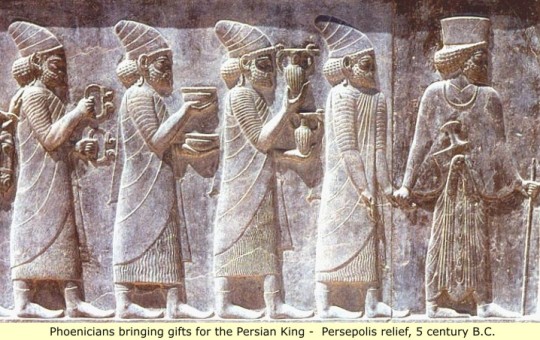
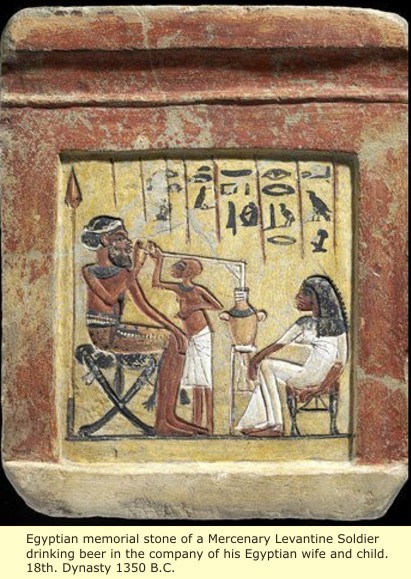
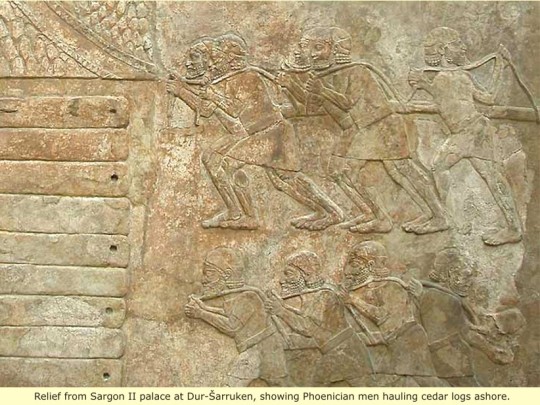
"The science of dnit/Denit [Kush/Kemet: Dam] construction has a long and stellar history amongst the kšyw mꜣnw/Kushiu Manu, [Kush/Kemet: Western Kushites] and kšyw wbnt/Kushiu Webenet [Kush/Kemet: Eastern Kushites].
Their 8,000+ year expertise in dnit/Denit [Kush/Kemet: Dam] construction is exemplified by those erected by the rmt/ Remetch [Kush/Kemet: Autochthonous Humanity i.e., the Blacks-Afrikans] of the leading Utamaduni Mkubwa [Kingozi: High Cultures] of antiquity.
Examples are those built by the kšyw mꜣnw/Kushiu Manu, [Kush/Kemet: Western Kushites] of tꜣ sty/Ta Sety [Kush/Kemet: Land of the Bow, Nubia], kmt/Kemet [Kush/Kemet: ‘Land of the Blacks’], iw mirwiw ꜣ/Iw Miruiwa [Kush/Kemet: Island of Meroe], the kšyw wbnt/Kushiu Webenet [Kush/Kemet: Eastern Kushites] of 𒆠 𒂗 𒄀 Ki-en-gi [KiEmegir: Land of the Noble Born Lords, Sumeria], 𒀀 𒂵 𒉈 𒆠 A-ga-dè-KI [Kiagadèki: Akkad], 𒁹𒄬𒆷𒁶𒋾 Haltamti [Kihaltamti: Elam], 𒆍𒀭𒊏𒆠 Ká-dingir-raki [KiEmegir: Babylon, Māt Kaldu], 𐩱𐩨𐩪 šbʾ/Shaba [Kimusnad: Sheba, Saba], 𐩢𐩣𐩺𐩧𐩣 ḥmyrm/Himyarim [Kimusnad: Himyar], hndwy/Hindui [Kush/Kemet: India, Sindhu, Bharatavarsa], and the 黎民 Li Min [Kichina: Black People, Black-Headed People, Black Founders of Chinese High Culture] of the 中國 Tchung-Kwoh [Kichina ya Kale: Middle Kingdom].
For additional information on dnit/Denit [Kush/Kemet: Dam] construction by the Wahenga na Wahenguzi [Kingozi: Ancestors of Ancestors] see: Norman Alfred Fisher Smith, A History of Dams (London: P. Davies Limited, 1971); Norman Alfred Fisher Smith, Man and Water: A History of Hydro-technology (New York: Charles Scribner's Sons, 1975); Mohamed Bazza, “Overview of the History of Water Resources and Irrigation Management in the Near East Region,” 1st IWA international Symposium on Water and Wastewater Technologies in Ancient Civilizations Under the Aegis of EU, EUREAU, FAO, UNESCO and Association of Greek Municipalities, Iraklio, Greece, 28-30 October 2006 Food and Agriculture Organization of the United Nations (Regional Office for the Near East: October 2006)"
Ambakisye Dukuzumurenyi, Forthcoming Book: Kushite Kanaan
11 notes
·
View notes
Text
Although reduced from a great power to an isolated kingdom behind the barren hills that blocked the southward advance from Aswān, Kush continued to rule over the middle Nile for another thousand years. Its unique Egyptian-Nubian culture with its strong African accretions was preserved, while that of Egypt came under Persian, Greek, and Roman influences. Although Egyptianized in many ways, the culture of Kush was not simply Egyptian civilization in a Nubian environment. The Kushites developed their own language, expressed first by Egyptian hieroglyphs, then by their own, and finally by a cursive script. They worshipped Egyptian gods but did not abandon their own. They buried their kings in pyramids but not in the Egyptian fashion. Their wealth continued to flow from the mines and to grow with their control of the trade routes. Soon after the retreat from Egypt, the capital was moved from Napata southward to Meroe near Shandī, where the kingdom was increasingly exposed to the long-established African cultures farther south at the very time when its ties with Egypt were rapidly disappearing. The subsequent history of Kush is one of gradual decay, ending with inglorious extinction in 350 CE by the king of Aksum, who marched down from the Ethiopian highlands, destroyed Meroe, and sacked the decrepit towns along the river.
instagram
2 notes
·
View notes
Text

ISLAM IN AFRICA.
The ancient Arabians are described as “Cushites” and “Semitic”, whom were described as “dark” and “brown” in complexion respectively.
According to the collaborative scholarship of Dr. Ben and Dr. George Simmonds, Muhammad’s grandparents originated in the Kingdom of Aksum modern day Ethiopia and were Kushites.
Muhammad’s grandfather frequently visited Aksum. Bilal, Muhammad’s “closest advisor" mother, was an Auximite and his father was an Arab and the same can be said for the Caliph Umar. (Jochannon 1991, p. 151) Bilal carried Muhammad’s lance, which was given to Muhammad by a companion, to whom it was gifted by the Ethiopian ruler of the kingdom of Axum.
You would now understand why the messenger of Allah may the peace and blessings of Allah ta'ala be upon him sent his companions to the Kingdom of Axum (Ethiopia) and not elsewhere on the Arabian peninsula. A similar journey he himself had undertaken when employed by his beloved wife Kadijah before his prophethood.
It is a commonly held belief that the 7th century Arabians attacked the African people and converted them to Islam by the sword. However, the works of Edward Wilmot Blyden known as “Father of Pan-Africanism” and of Dr. Cheikh Anta Diop show, Arabians introduced the people of the continent to Islam with no coercion.
“…What really took place, when the Arab met their Negro brethren in his own home, was a healthy amalgamation, and not an absorption or an undue repression.” (Blyden 1994, 14)
The primary reason for the success of Islam in black Africa, with no exception, consequently stems from the fact that it was propagated peacefully, Islam therefore is a religion of Africa and Africans.
An 18th century publication says, Islam was spread through Africa by African Muslims who established schools to teach its tenets to
their children, not by the sword.
The introduction of Islam into Kushite and Egyptian Africa liberated North Africa from oppressive Byzantine colonial occupation and rule.
Greek rule had become extremely repulsive in Egypt and it was gladly exchanged for the rule of the Muslins whom were called Saracens.
“The people of Egypt wanted the Muslims to enter the country in an effort to rid themselves of the Roman oppressors.” (Asante 2007, 213)
“The black Muslims came chiefly as traders. . ." and, “. . . gave frequent evidence of their respect for these black brethren nations." (Dubois 2001).
MUSLIM LIBERATION OF ISRAELITES IN PALESTINE.
The Hebrews Israelites under the colonial domination of the Byzantines in Palestine, were among the nations liberated by the 7th century Muslims.
After taking possession of Palestine from the Byzantines, Umayyad khalif Umar ibn Abdul Aziz (Omar II) opened Jerusalem to the black Israelites the decendants of Yakoob and gave them equal rights with the Christians. He himself helped to clean the Holy Temple of the filth and rubbish piled upon it by Christians to spite the Israelites. Israelites, here does not refer to the current white Ashkanazis Zionist of occupied Palestine.
“For a while, it must have seemed that the Moslems would overwhelm all of Christian Europe”.
“It is clear, however, that the conquest of Spain was undertaken upon the initiative of Tarik ibn Ziyad . . . a member of the Warfadjuma branch of the Nafza Berbers.” (Van Sertima 1993, 54)
Below, is an artistic rendition of General Tariq ibn Ziyad (670 CE – 720 CE).
THE PERSIAN OVERTHROW OF THE KUSHITE-ARABIAN KHALIFATE.
The Umayyad Dynasty from Muhammad’s tribe of Quraish (Quraysh), exercised exclusive rule over the Islamic World from 661 – 750 CE.
The exclusive rule of the Islamic empire by the Umayyads was short lived.
In a coup engineered by the Persian general Abu Muslim, in 750 CE, they were overthrown by the Abbasids. Abbasid culture would come to be dominated by the legacy of Persian civilization, and the capital of the Islamic empire was moved from Damascus to Baghdad, near the old Persian capital of Ctesiphon. (Latif 2019, p.3)
“Under the Umayyads, only those of full Arab parentage on both sides were admitted to the highest offices of the state. Under the ‘Abbasids, not only half-Arabs, but Persians and and former slaves rose at the caliphal court, where the favor of the ruler, more than noble descent, was the passport to power and prestige.” (Lewis 1995)
The remnant of the Umayyads, who grieved the decline of Arabian power, migrated westward and settled in Spain under the Fatimid Caliphate, or abode in Africa under the suzerainty of an Arab potentate, at a distance from the power of the Abbasids.
note-Israelites here refer to the descendants of prophet Yakoob who were all black and not the current European Ashkanazis jews who are currently occupying Palestinian lands.
10 notes
·
View notes
Text










Oromia or Oromia is the largest nationality and one of the most civilized nationalities in Ethiopia 🇪🇹
The national population reaches 35 million people, or up to 39% of the country's population
The largest percentage of Oromo converts to Islam, followed by Christianity
The colors of traditional clothing are red, white and black. Women perform accessories in the form of an inverted triangle at the front of the head
There is evidence that they are the womb from which most of the southeastern Kushite peoples emanated, such as the Somalis, the Afrin, the Sahu in Eritrea, and the Nubians in Egypt and Sudan. And a large part of the Guraghi people, and they used their historical port (Zeyla) "Zeyla" to import and export goods such as livestock and grains such as corn, barley, coffee and animal skins.
9 notes
·
View notes
Text
“Racism, Egyptological stereotypes and the intersection of local and international at Kushite Tombos
youtube
Egyptological and more popular perceptions of Nubia and the Kushite Dynasty (c. 747-654 BCE) have framed Kush as a periphery to civilized Egypt, unsophisticated interlopers in Egypt and the broader Mediterranean world during the first millennium. Depictions of Nubians from earlier periods of Egyptian history, like Tutankhamen’s painted box, reinforced these ideas of Nubian inferiority compared to Egypt and the Near East. But to what extent was Nubia a “backwater” to “effete and sophisticated” Egypt as John Wilson once asserted? For the Persians, depictions of Nubians and other foreigners presenting gifts at Persepolis represented the diversity of the empire paying homage to the Persian king as anFwd: [sfbayegypt] all-lord whose rule encompassed numerous peoples. Archaeological evidence supports the more cosmopolitan Persian view of Kush against older racist Egyptological stereotypes of “barbaric” Nubians.
It is clear from recent archaeological work at Tombos and elsewhere that Nubia was not an unsophisticated backwater. Objects with Egyptianizing motifs in the international style asserted a cosmopolitan social status that connected their owners to an international elite culture that spanned Nubia and Egypt, and extended across the Mediterranean during the Iron Age. Yet consumption of this material culture was mediated by cultural preference, and balanced by objects like pyramids and black topped pottery that reflected ties to an Egyptian colonial and deeper Nubian past. The Kushite civilization that flourished for a thousand years was not an imperfect imitation of ancient Egypt, as some Egyptologists have asserted. Instead, features taken from Egypt and the Mediterranean world were adapted and thoroughly integrated with local practices and belief systems.
About the Speaker:
Stuart Tyson Smith received his PhD in Archaeology from UCLA, and is Professor of Anthropology and Director of the Institute for Social, Behavioral, and Economic Research at the University of California, Santa Barbara. Smith’s research centers on the civilizations of ancient Egypt and Nubia with a theoretical focus on the social and ethnic dynamics of colonial encounters and the origins of the Napatan Kushite state, whose rulers became Pharaohs of Egypt’s 25th Dynasty. He has published on the dynamics of Egyptian imperialism and royal ideology, the use of sealings in administration, death and burial in ancient Egypt and Nubia, and the ethnic, social and economic dynamics of intercultural interaction between ancient Egypt and Nubia. He has participated in and led archeological expeditions to Egypt, and since 1997, to Sudanese Nubia, where he co-directs the UCSB-Purdue University Tombos expedition to the third cataract of the Nile with bioarchaeologist Prof. Michele Buzon and Prof. Mohamed Faroug Ali of Africa International University, Khartoum. In addition to fieldwork, he is engaged in a long-term study and write-up of the UCLA excavations conducted by the late Alexander Badawy at the fortress of Askut in Sudanese Nubia. In a new line of research, Smith applies a postcolonial approach to modern scholarly and popular views of ancient Egypt as not truly African and Nubia as its subordinate, confronting the intersection between racism and longstanding academic and political bias. In 1993, he took a break from academia as Egyptological Consultant for the hit MGM movie ‘Stargate,’ commenting on the script and recreating spoken ancient Egyptian for the film. He returned to Hollywood consulting in 1998 and 2000 for the Universal remake of ‘The Mummy’ and its sequel, ‘The Mummy Returns,’ and most recently for 2018’s web production ‘Stargate Origins: Catherine.’ “
From the youtube channel Northern California ARCE.
7 notes
·
View notes
Text
Kushite-Roman Conflict & War: A Clash of Empires in Ta-Seti (Nubia)
The conflict between the Kushites and the Romans stands as a riveting chapter in the annals of history, revealing the clash of two mighty civilizations and the resilient spirit of the Kushite people. It all began after Egypt came under the dominion of the Roman Empire, following the defeat of Mark Antony and Cleopatra at the famed battle of Actium in 31 BC. This marked the inception of Roman…

View On WordPress
#African History#African war#Amanirenas#Augustus#Kushite army#Kushite History#Kushite people#Kushite-Roman#Kushite-Roman Conflict#Nubian history#Queen Amanirenas#Roman#Ta-Seti#war
0 notes
Text
There's an irony in the case of Pharaohs as with the Hawai'ian Kingdom that absolutism gets the one pass:
At the dawn of recorded history the first Black people to cross from archaeological/oral cultures into recorded, written histories were the peoples of Kush, the ancestors of the Nubians of the present. For the entire span of Ancient Egypt they lived often in its shadow and in the grim realities of serial predation by Egyptian armies of the most powerful phases of Pharaonic civilization, before in the 25th Dynasty proving very capable pupils indeed of their former imperial overlords and winding up more Egyptian than the Egyptians.
The various fetishism of and manias for the artifacts of Pharaonic civilization tend to neatly slide past that the political culture of these states was a shinier, golden North Korea ruled by divine monarchs who had very literal power of life and death and gloried in pyramids of severed genitalia ripped off the bodies of their victims. This was a reality Kushites spent so much of their time uncomfortably aware of, and the same reality that led them to form and organize both states and armies on a model very like that of their oppressors.
It's also a reality marked in a string of fortresses, which are testaments to the military power of the first great absolute monarchy, and to how it preferred to organize its power in real terms. And these are fortresses designed in line with the best, most hard-hitting technology of their time.
One can also see the first stirrings of one of Africa's most reliable dynamics, that of swaggering arrogant imperialists who march in Conquistador style into the world of Black Africa, and then find out the hard way that kicking a hornet's nest means the hornets kick back.
#lightdancer comments on history#black history month#military history#kingdom of kush#ancient egypt#imperialism#imperialism and military history#african history
1 note
·
View note
Text
THE IMPACT OF TECHNOLOGY ON SOCIAL CHANGE

Technology is the application of scientific knowledge to the manufacture of tools to solve specific problems. Technological advances in automobiles, airplanes, radios, televisions, mobile phones, computers, fax machines, etc. Have brought about great advances and changes in the world. Infact, 20th century technology has completely and irreparably changed the way people meet, interact, learn, work, play, travel, worship, and do business. Technical information is growing exponentially. The entire database of scientific knowledge is doubling every few years. This "Technological explosion" is partly due to an "information explosion" and advances in data storage, retrieval, and transmission. In other words, a cycle is created. Improving technology leads to increase in knowledge and information, wich reveals ways to create better technology.

Throughout records, every civilization, society, nation and empire has grown, risen and fallen with generation at its helm. Mesopotamia, the historical so-called “cradle of civilization,” noticed the historical Sumerians invent maximum of the simple items (technologies) which can be nonetheless used today, consisting of ships, the wheel, irrigation systems, metallurgy, and one of the oldest written scripts. Technology influences each a part of a society, nation or empire, and is primarily based totally at the to be had math and technological know-how of a society, affecting every sub-aspect of a civilization, consisting of its: Military Architecture Cities Health Communication Government Time/Calendars Ancient technology, of which the oldest science, math and medicine is recorded in East, Southern and Northern Africa, such as Adam`s Calendar and the oldest mathbased calculator, helped the ancient kingdoms to keep time, communicate numerical quantities, and helped them to govern their economies and grow in size. Technology also helped to shape agricultural practices, which helped ancient societies to thrive, and formed the backbone of the powerful economies of antiquity. The invention of irrigation systems, architectural structures, the invention of glass, and the use of baked clay all played a part in the development of ancient cities and kingdoms.After the industrial revolution, these landmark inventions have evolved into mega cities, sky scrapers, and farms that feed millions today. Technology also played a part in the creation of empires in globalization and in ancient trade, as chariots, ships, and the ancient “Silk Road” all helped kingdoms trade, become wealthy and powerful, and to spread in influence, resulting in the conquering of kingdoms and the linking together of different civilizations. Technology has even affected how the most basic essence of human communication language has developed. For instance, some ancient languages, such as the stillspoken Basque language, has root words for modern tools linked to the word “stone,” indicating its ancient, potentially stoneage origins. Though it is a language isolate, hypothetically, if such language changed the roots of English words, for instance, the invention of stone tools eons ago could potentially affect the spoken language of English today. In fact, two of the most important examples of how technology helped change human societal behavior and perhaps evolution is the development of stone tools and the ability to harness fire. Both aided in the survival of early hunter societies that created the ancient behaviors that Homo sapiens are known for (the huntergatherer model before the development of agricultural societies), effectively changing the course of our evolution by even changing the genetics of whole societies (genetic flow). From antiquity to now from the Egyptian and Kushite empire, to the Aksumite and Chinese empire, to the Assyrian, Babylonian and Persian empires, to the Greek, Roman, Mali and British empires all such advanced kingdoms grew into empires due to their strong economies (resulting from advanced technology), strong militaries (resulting from advanced technologies), and powerful communication/transportation abilities (resulting from advanced technologies). It could be said that history has been written by the invention and use of advanced technology. Throughout human history and after the industrial revolution, humans changed from being huntergatherers to more sedentary creatures whose technology automates many tasks for them, resulting in more sedentarybased chronic illnesses and unhealthy diets, while also making life more convenient and “easier.” While in the ancient world it could take months to send a message from one end of the globe to the other or to travel from one country to another today, messages can be sent almost instantly via the Internet, and it is possible to travel around the world.
How has Technology Affected Human Life and Caused Great Changes?
Ultimately, generation has undoubtedly affected human existence from antiquity till now via way of means of fixing issues related to normal existence, and making it less complicated for extraordinary duties to be completed. Technology has made it less complicated to farm, extra viable to construct cities, and extra handy to travel, amongst many different things, efficiently linking collectively all nations on earth, assisting to create globalization, and making it less complicated for economies to develop and for groups to do business. Virtually each aspect of human existence may be performed in an less complicated, extra effective, and faster style thru technological solutions, ensuing in much less issues in a single way, and extra issues in another. Technology has had some undesired impacts on society as a whole, but it can have Positive impacts rather than negative ones. These impacts make life easier for many and provide them with the resources, education and tools they need to lead a better life. These impacts have a significant impact on the agriculture, transportation, telecommunications and education sectors of society around the world. Agricultural mechanization Ancient agricultural practices have undergone fundamental changes due to the mechanization of agriculture. Such mechanization means that mechanical and technical systems (including robots) have replaced older agricultural systems such as flagship products and manual labor. This has led to more automated and highly efficient agricultural practices that produce far more abundant food resources for more people. Transportation system improvements It is still possible to walk to most parts of the globe, but with the advent of trains, buses, cars, planes, speedboats, etc., people can get in and out of their destinations in much less time. Rice field. In addition to ride-sharing apps like Uber and Grab, getting to your destination quickly and cheaply has never been easier. Since the backbone of any society is an infrastructure that includes both telecommunications and transportation systems, the development of both Systems has greatly helped shape the modern world. Improvement on Communication Telecommunication systems are a very crucial part of any advanced society. From using bird messages and smoke signals, to the faster, more efficient, more effective, and more global system of email, phone calls, and app messaging allows for people to stay connected in a globalized world. From Skype to VOIP to global telecom carriers, it is highly feasible for people to travel the world and stay connected, and even possible for remote workers or international businesses to utilize video calls and conference calls via the Internet to keep their businesses going without interruption. Improving the Education and Learning Process In the modern world, it is as easy as utilizing a Google search, podcast, or YouTube video to learn virtually any skill that one needs to succeed, whether it be a new language, a programming language, a technical skill, or an obscure part of history. As opposed to having to learn from printed paper books, now ebooks and even online seminars allow people to learn in a faster, more efficient fashion, and with the convenience of mobile computer systems/apps. Online gateways and websites enable educational institutions to provide materials in a whole new and streamlined way, allowing students to use their familiar computer systems to learn materials and put them together in one place. Increase.
0 notes